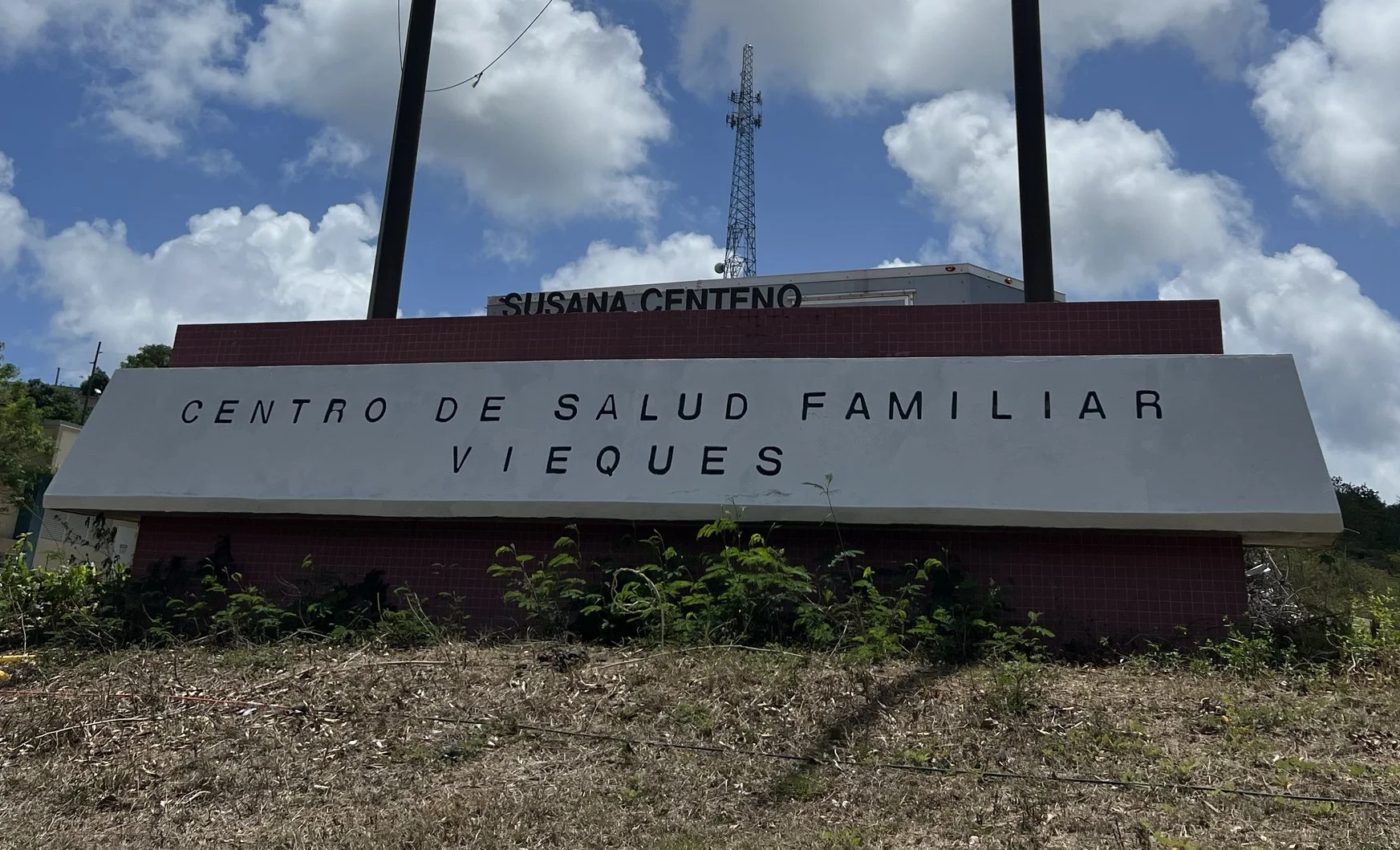Lessons from Vieques: Resilience in Remote Healthcare
Community Grassroots Action & Innovation in Puerto Rico’s Remote Island of Vieques
Design & Healthcare: A Necessary Connection
As an architect, I’ve often seen a strong focus on “designing experiences” in retail—spaces carefully crafted to relax and mesmerize consumers, encouraging them to engage and buy.
In stark contrast, design in clinical settings is frequently dismissed as an added cost. Yet I believe healthcare environments are exactly where thoughtful design is most essential—to calm people, help them navigate their emotions, and create a sense of control in moments of vulnerability.
Industrial designer Yves Béhar’s philosophy resonates here:
Design is most needed during extreme change. These are not the moments to opt out of design—they’re the moments to embrace it.
Read more from Yves Béhar here
My Visit to Vieques: A Remote Island with Extreme Challenges
Simplified map of Puerto Rico and Vieques island highlighting geographic isolation
Last year, I visited Vieques, a small, remote island off the coast of Puerto Rico with around 9,000 residents. Its remoteness, stunning beaches, and serene beauty left a strong impression—but so did its challenges. The island is about 10 minutes away by flight or 40 minutes by ferry from the mainland, making it isolated in many ways.
I couldn’t help but wonder: What do people do in emergencies?
That question became even more urgent when I noticed two pregnant tourists—and discovered that Vieques has no birthing center.
Digging deeper, I was shocked to learn that Vieques has one of the highest cancer rates in Puerto Rico—around 40% of total cases. The island was once used by the U.S. military for live-fire training and munitions testing, leaving behind toxic compounds. Studies are still ongoing, but the legacy is deeply felt. And even today, residents have no local access to cancer care, dialysis, or other advanced medical treatment.
Present-Day Challenges:
Accessing healthcare in Vieques remains an extreme challenge:
No birthing center
No facilities for cancer treatment or dialysis
Major transportation barriers—unreliable ferries, limited flights, and long road trips
Even treatable conditions can become life-threatening due to delays, logistics, or weather. The system itself is a stressor.
The Past: What Vieques Lost - Lifeline
The abandoned clinic that once served as Vieques’ critical healthcare hub
Before Hurricane Maria devastated the island in 2017, Vieques had the Susana Centeno Hospital, which had been a lifeline for the community since its opening in 1953. It provided essential services like emergency care, outpatient services, and maternity care. After the hurricane, the hospital was destroyed and never rebuilt—leaving a critical void in healthcare access.
This loss left residents with no hospital and forced them to rely on makeshift solutions or endure difficult journeys to the mainland for treatment.
Susana Centeno Hospital — once the heart of healthcare on Vieques, destroyed by Hurricane Maria in 2017
Present - Day : Resilience in Action
Since then, a small private, nonprofit clinic HealthproMed clinic has been operating on the island which primarily functions as a triage or stabilization point, but it is not equipped to handle all medical emergencies or complex treatments.
This clinic provides essential services like:
General medicine
Pediatrics
Gynecology
Behavioral health
Oral health
Optometry and nutrition support with modern equipment
Other grassroots efforts have emerged to support the community. In 2023, nonprofit group called Alianza launched VER (Vieques Emergency Relief)—a program that helps cancer patients reach the main island for treatment. The process is arduous—patients must take a ferry, then continue by road—but it’s a lifeline for those with terminal illnesses.
Weather conditions often dictate whether patients can be transported, adding another layer of vulnerability.
This limited setup means that even treatable conditions can become life-threatening simply due to delayed access or logistical complications. It’s a system that, by its nature, pushes people to the edge—both physically and emotionally.
Hope on the Horizon
Playa La Chiva, also known as Blue Beach, in Vieques, Puerto Rico—its endless horizon echoing the hope for a fully restored hospital on the island
While the clinic provides critical everyday care, the return of a full hospital—if completed—offers real hope. Reconstruction of the Susana Centeno Hospital is now underway in three phases:
Phase 1: Dialysis units, trauma/obstetrics rooms, backup power systems (dialysis expected by late 2025)
Phase 2: Emergency room, imaging, pharmacy, labs, and helipad (scheduled for spring 2025)
Phase 3: Outpatient clinics and specialist services (planned for end of 2025)
A comment I came across on Reddit perfectly captures the island’s current reality:
"Our new hospital is coming along pretty fast. Not sure if it will be open by 2025 though. There is essentially a triage setup in case of emergency and a transport on standby that will fly people to the hospital in Fajardo. Depending on the severity of the injury, EMS will stabilize and then transport. Stitches, I’d be ok with. Broken bone, not so much. Don’t stand behind any horses."
This mix of humor and hard truth reflects the resilience and spirit of Vieques’ people—a community that continues to fight for better healthcare and refuses to give up.
Lessons for Global Healthcare: Design for Extreme Environments
Vieques is a stark reminder of the healthcare disparities that exist in isolated communities. But it’s also a blueprint for resilience: a story of grassroots efforts, community care, and innovation against the odds.
Yves Béhar’s words again echo here: design matters most in moments of extreme change. Remote and underserved communities like Vieques need solutions that are adaptable, sustainable, and deeply human.
As we think about the future of healthcare, Vieques offers valuable lessons about resilience, grassroots movements, and the potential of design to transform lives.
Whether through telemedicine, community-led initiatives, or state-of-the-art clinics, we have the tools to bridge gaps and create a better, more equitable healthcare system—even in the most extreme environments. It also serves as a reminder of the critical role design and innovation play in addressing healthcare disparities.
What did you find most surprising? Share your thoughts below.




